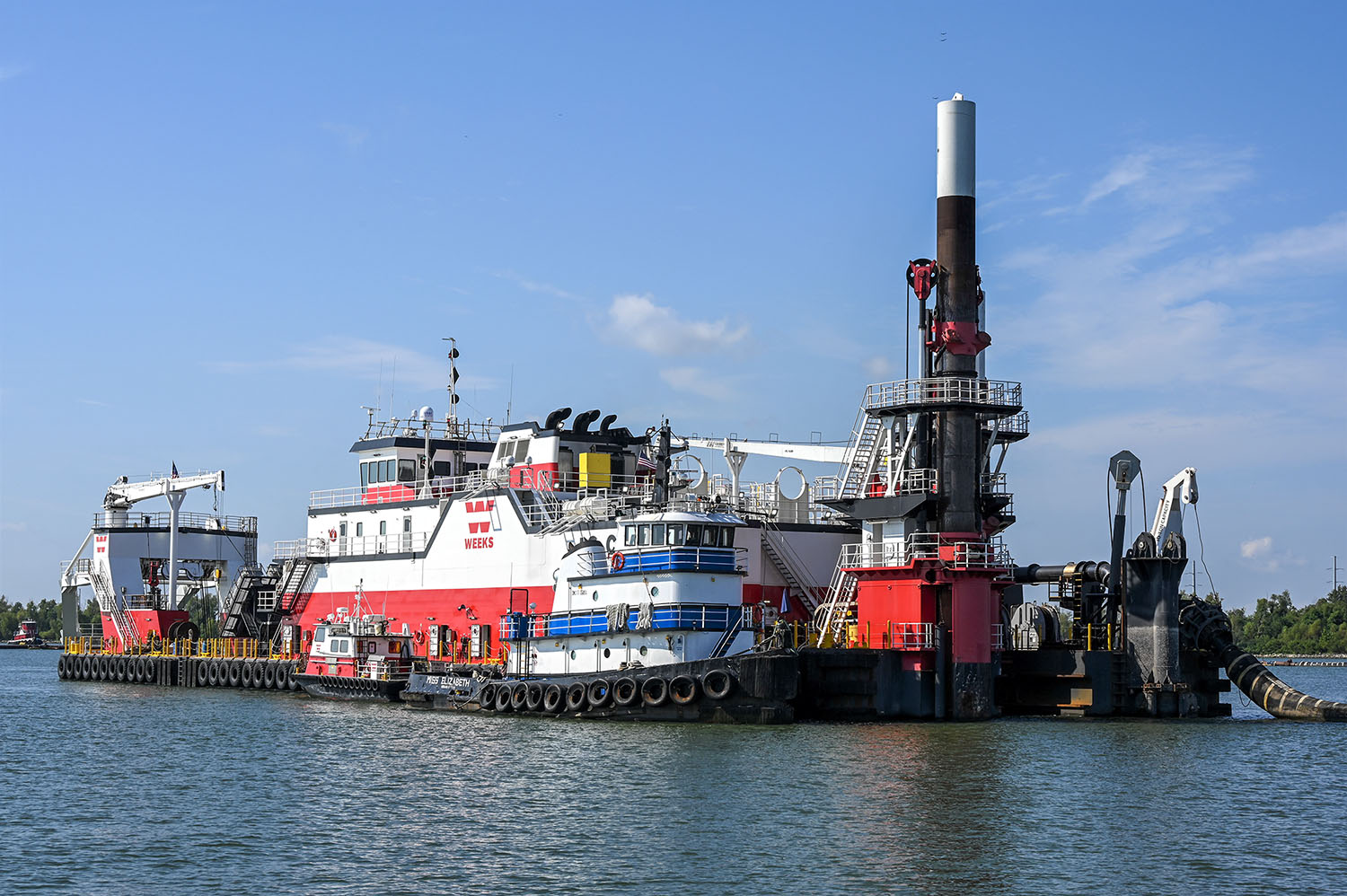Salt water in the Mississippi River is continuing to move upstream, threatening the fresh water supply of communities along the last 100 miles of the river.
Salt water is more dense than fresh water, and the riverbed of the Lower Mississippi River is below sea level, so when flows in the river are extremely low, salt water pushes upstream. It does so in the shape of a wedge, with the leading edge on the riverbed and seawater rising toward the surface downstream. Historically, sea water reaches the surface of the river about 15 to 25 miles downstream of the toe.
In the past week, the leading edge or toe of the salt water wedge moving up the Mississippi River from the Gulf of Mexico has traveled upriver about 3 miles, with the New Orleans Engineer District estimating it to be at about Mile 69.4 above Head of Passes (AHP) as of September 27. That’s near the town of Jesuit Bend and about 5 miles upriver from a sill the Corps has built to slow the upward flow of salt water.
At the current rate of advance, and with little rain forecast for the Mississippi Valley over the next month, the Corps is estimating the salt water could reach fresh water intakes in Belle Chasse around October 13, in Chalmette by about October 19, the west bank of Jefferson and Orleans parishes between October 22 and 26 and the New Orleans intake in the Carrollton neighborhood around October 28.
In July, the Corps built an underwater sill near Mile 64 at Myrtle Grove to an elevation of -55 feet in hopes of stopping the advance of the salt water. The wedge, however, overtopped the sill around September 20. To slow the upward movement of salt water in the river, the Corps began augmenting the sill September 24 by raising it to -30 feet, with a 620-foot gap in the middle at -55 feet to allow for deep-draft navigation.
“Salt water intrusion is a naturally occurring phenomenon when the river flows fall below 300,000 cubic feet per second because the mass of fresh water is no longer capable of preventing salt water from moving into the below-sea-level river channel,” the New Orleans District said in announcing the augmentation of the sill.
Meanwhile, communities on both sides of the river are preparing for the eventuality of chloride levels in the river rising above 250 parts per million, the threshold set by the Environmental Protection Agency.
Communities in lower Plaquemines Parish have been dealing with elevated chloride levels since June. The parish is supplying bottled water and has tied water treatment systems in the lower part of the parish to water supplies upriver that have not yet been compromised. The parish is also procuring reverse osmosis systems for some treatment plants and has recently brought a treatment plant in Port Sulphur back online that had been shuttered since Hurricane Ida in 2021.
For all four parishes, the Corps is planning to provide reservoir barges in order to dilute salt-water-impacted river water to safe levels. Officials in Jefferson and Orleans parishes, though, have said blending with barged-in fresh water likely will be insufficient to meet supply demands. Those parishes are looking at piping in fresh water from farther upriver, an effort that reportedly could cost between $100 million and $200 million.
New Orleans’ east bank water treatment plant supplies about 150 million gallons of water per day, while the city’s west bank treatment plan supplies about 12.5 million gallons of water per day. The Corps has said it plans to supply up to 36 million gallons of water per day by barge.
Preparation for and response to salt water in the river will fall under a federal emergency declaration, after President Joe Biden approved Louisiana Gov. John Bel Edwards’ request on September 27.
“I’m grateful to the Biden administration for making this request a priority and responding quickly to help the people of South Louisiana,” Edwards said in a statement. “Efforts to mitigate the impact of the salt water intrusion are currently underway and other projects are being considered based on the projections being received from the United States Army Corps of Engineers. This 90-day approval of our emergency declaration will help our state and local partners with the costs of any mitigation efforts and protective measures. As this even unfolds, we will continue to analyze the emergency efforts and impacts to determine if further requests will be necessary.”
The emergency declaration applies to the parishes of Jefferson, Orleans, St. Bernard and Plaquemines.




